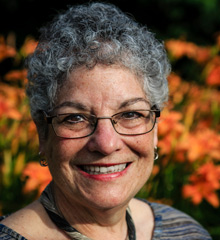Revised by author, 9/23
SUMMARY
The Book of RuthThe great-grandmother of David. More tells the story of 3 people: NaomiThe mother-in-law of Ruth. More, a widowA widow is a woman whose spouse has died, often plunging her into poverty and putting her in a vulnerable position in society. Jesus, in his concern for the poor, regards widows with compassion and concern. More from Bethlehem in JudahJudah was the name of Jacob’s fourth son and one of the 12 tribes. More; Ruth, her daughter-in-law from Moab; and BoazHusband of Ruth and great-grandfather of David. More, a gentleman farmer from Bethlehem. Ruth, in a supreme act of devotion, follows Naomi home from Moab and there meets Boaz, Naomi’s close relative. Boaz understands that Ruth, though a foreigner from a despised nation, is a woman of worth. Through a scheme of Naomi to send Ruth to meet Boaz in secret, and through the cleverness of Boaz, who claims Ruth before the city eldersElders are leaders who exercise wisdom or leadership by virtue of their age and experience. In the New Testament elders, along with the chief priests and scribes, constituted the primary opposition to Jesus when he taught in Jerusalem. More, Boaz and Ruth marry and have a child, thus ensuring the continuation of the Davidic line that eventually leads to the birth of JesusJesus is the Messiah whose life, death, and resurrection are God’s saving act for humanity. More.
SO WHAT?
The Book of Ruth shows how the actions and commitments of ordinary and even unexpected people such as foreigners and widows can change the course of history for the better. The book helps the reader to redefine family, to appreciate the significant role of the righteousA righteous person is one who is ethical and faithful to God’s covenant. Righteousness in the Old Testament is an attitude of God; in the New Testament it is a gift of God through grace. In the New Testament righteousness is a relationship with God… More foreigner, and to look at the importance of living up to the spirit rather than the letter of the law. God works through the actions of a widow, a foreigner, and a wealthy farmer to bring about the birth of the grandfather of King DavidSecond king of Israel, David united the northern and southern kingdoms. More, which ultimately leads to the birth of Jesus.
WHERE DO I FIND IT?
Ruth is the 8th book of the Bible. It follows Judges–no doubt because it identifies itself as falling in the same period–and comes before 1 SamuelThe judge who anointed the first two kings of Israel. More. The Book of Ruth ends with David’s genealogyGenealogy involves the study and tracing of families through the generations—in short, family history. One genealogy in Genesis traces the nations descended from Noah. In the New Testament Matthew traces the ancestry of Jesus back to Abraham, while Jesus’ genealogy in the Gospel of Luke… More, so it provides a transition between Judges and the historical books of the Old Testament. In Jewish tradition, the Book of Ruth follows the book of Proverbs.
WHO WROTE IT?
The author might have been a village priestA priest is a person who has the authority to perform religious rites. In New Testament times priests were responsible for daily offerings and sacrifices in the temple. More, an elder, a teacher, or a wise woman who told ancestral stories to edify and to inspire the people.
WHEN WAS IT WRITTEN?
Ruth is an independent narrative that might have been written any time from David’s reign to postexilic times. Some suggest that the emphasis on the righteous foreign woman (Ruth) was specifically intended to counter the attitude toward foreign women found in the postexilic period of EzraScribe who helped establish Jewish practices in Jerusalem after the exile. More and NehemiahThe governor of Jerusalem who rebuilt the city walls after the exile. More (Ezra 10:1-5; Nehemiah 13:1-3).
WHAT’S IT ABOUT?
The Book of Ruth tells the story of how a widow, Naomi; her daughter-in-law from Moab, Ruth; and a wealthy farmer from Bethlehem, Boaz, make possible the birth of Obed, the grandfather of King David.
HOW DO I READ IT?
The Book of Ruth, like so many of the individual narratives in Genesis through Kings, uses action, dialog, suspense, humor, irony, and an acute sense of human character to illustrate lessons of history and theology. Readers should attend to understanding the characters, the settings (places and times), and the major themes as well as repeated or emphasized ideas or words.

